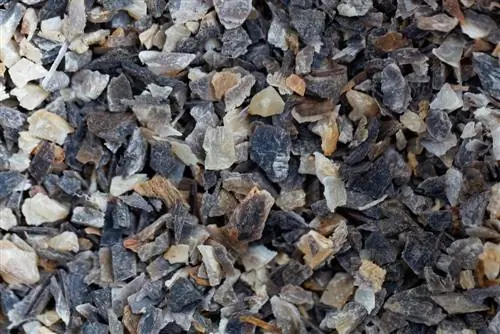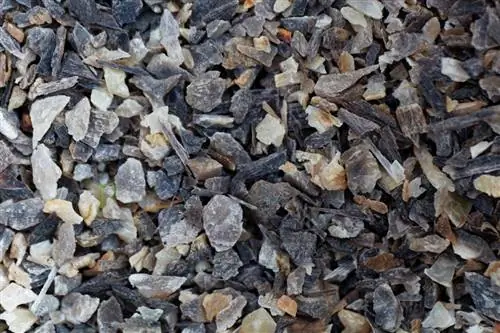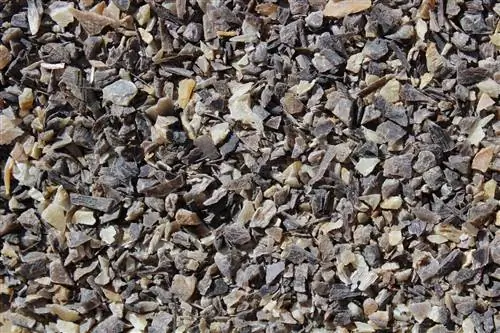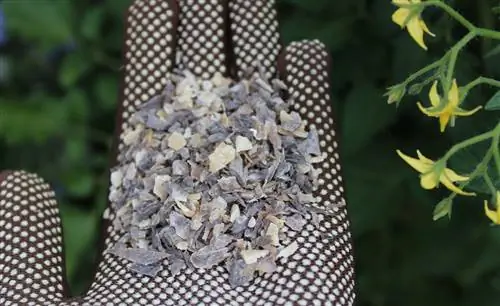- Author admin [email protected].
- Public 2024-01-02 03:03.
- Last modified 2025-06-01 06:02.
Conventional fertilizers often do not deliver what they promise. Fortunately, there are numerous ways to naturally enrich your houseplant's substrate with nutrients. Try it with horn shavings. In this article you will find all relevant information about the production and application of the organic material.
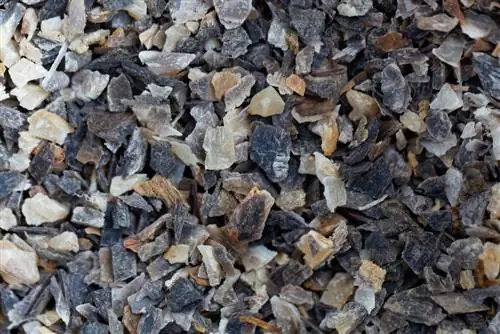
How do horn shavings help fertilize houseplants?
Horn shavings are an environmentally friendly, long-term fertilizer for houseplants made from animal hooves. They provide plants with a sustainable supply of 9-14% nitrogen, 6-8% phosphorus and 7% calcium. Horn shavings release nutrients slowly and do not change the pH of the substrate.
What you need to know about horn shavings
What are horn shavings
Horn shavings are a so-called secondary fertilizer, as they are actually just a waste product. Horn shavings are obtained from animal hooves. In order to utilize a slaughtered animal as completely as possible, manufacturers plan the hooves and grind the material into shavings.
Are horn shavings poisonous?
Horn shavings are a natural product that does not contain any toxic substances. However, they are not suitable for consumption. Also, be careful not to inhale the dust when applying it to the potting soil.
Are there any differences in quality? What should you pay attention to when buying?
The material is basically always the same, but there are different types of products. Horn shavings are differentiated based on their degree of grinding. You can choose from the following categories:
- Horn flour: grinding smaller than 1 mm
- Horn meal or semolina: grinding around 1 - 5 mm
- Horn shavings: grinding larger than > 5 mm
How effective are horn shavings as houseplant fertilizer?
Horn shavings act like a long-term fertilizer. It can take up to three months for benefits to become noticeable. Nevertheless, the material has the advantage of being very sustainable. Horn shavings provide your houseplants with the following nutrients:
- Horn meal: 10 - 13% nitrogen, 5% phosphorus and 7% calcium
- Horn semolina: 12 - 14% nitrogen, 6 - 8% phosphorus and 7% calcium
- Horn shavings: 9 - 14% nitrogen, 6 - 8% phosphorus and 7% calcium
Another advantage is that the pH value of the substrate does not change during application. As a result, over-fertilization is practically impossible.
Note: But be careful, horn shavings also have disadvantages. The scent has a stimulating effect on pets, for example. Your cat may end up digging in your flower pots. Likewise, you must decide for yourself whether you can support the use of animal body parts from an ethical perspective.
Application
Using horn shavings is comparatively easy. It is best to apply the material to the substrate in autumn so that the nutrients are available to your plants in spring.

